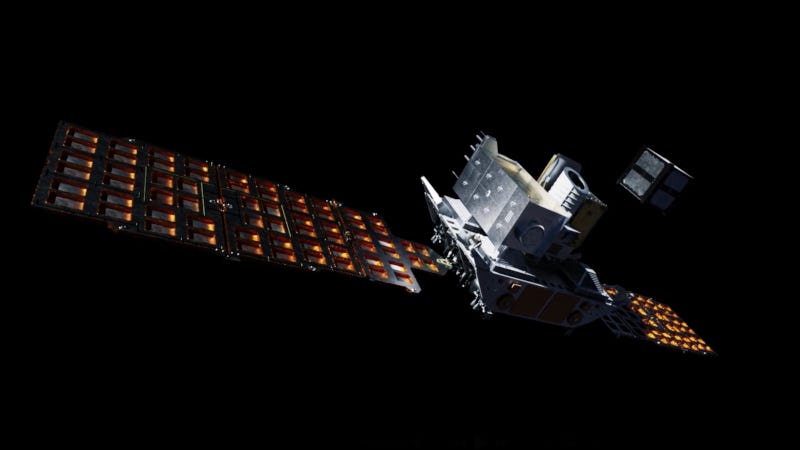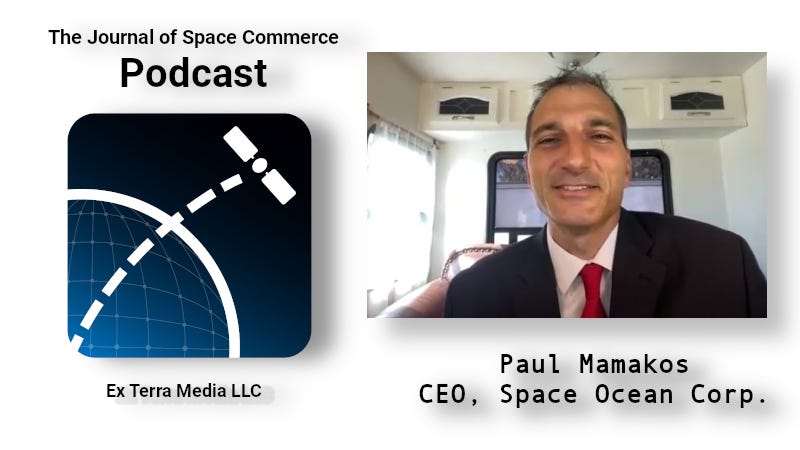The Federal Communications Commission has launched what it calls a generational rulemaking to overhaul its satellite and earth-station licensing processes. This proceeding represents the centerpiece of the Commission’s Final Frontiers agenda to ensure that America’s space innovators build and win on the global stage.
The Notice of Proposed Rulemaking would overhaul the agency’s decades-old regulations and rewrite them from the ground up in a new Part 100. In particular, the Commission proposes a “licensing assembly line” that would expedite reviews through a modular system that routes and resolves applications based on a company’s tailored needs. This new process would at once give applicants both greater predictability and flexibility. As with an actual assembly line, the FCC expects reviews to be accelerated dramatically as the Commission’s space licensing work focuses on specific issues that require the agency’s attention.
The licensing assembly line is designed to increase the speed of application processing, provide more predictability for companies, and give the FCC new tools to promote today’s space innovators. It does so by establishing bright-line criteria as to when applications serve the public interest, while providing clarity as to exceptional circumstances that warrant more considered review.
The proposed rules will transform the Commission’s regulations in other ways, too. The Commission will rethink many legacy rules from first principles, including surety bond requirements, license terms, processing rounds, and the list of modifications that do not need new approval. A new nationwide earth station license is proposed to reduce red tape. To promote space safety in a light-touch manner, the Commission proposes to require satellite operators to share space situational awareness data with each other. Finally, the proposed Part 100 would delete a wide swath of unnecessary rules, in keeping with the agency’s Delete, Delete, Delete proceeding.
“We propose to overhaul the FCC’s licensing processes to match the scale and dynamism of today’s space economy. Through an aggressive set of rules designed from our first principles perspective, we propose to replace our legacy default to no mindset with a default to yes framework built on permissionless innovation,” said FCC Chairman Brendan Carr said during the October open meeting. “We plan to do away with bespoke licensing processes in favor of a licensing assembly line. We intend to set out bright line rules about the kinds of applications that serve the public interest, as well as simplifying applications, establishing clear timelines, and increasing flexibility for licensed operations.”
The FCC has been laying the groundwork to boost America’s space economy since January.
-0-
Firefly Aerospace has successfully completed its acquisition of advanced national security technologies company SciTec, Inc. The purchase price consisted of a combination of cash and Firefly common stock paid to SciTec owners for the acquisition, which was first announced on October 5.
Firefly said that the acquisition adds several verticals to its business, including Critical Defense Software; Big Data Processing; and National Security Programs. The acquisition comes with a robust contract portfolio, state of the art facilities, and adds more than 475 employees to the Firefly roster, including data and software experts.
SciTec will operate as a Firefly subsidiary under its existing business model, led by current CEO Jim Lisowski, who reports to Firefly’s CEO Jason Kim.
-0-
The LEO Express 3 mission is among payloads manifested to launch with SpaceX aboard Transporter 15. This marks the third flight for Mira, a high-thrust, highly maneuverable spacecraft developed by Impulse Space, and is the first mission for the upgraded vehicle design.
Building on the successful LEO Express 1 and 2 missions, LEO Express 3 will: validate Mira’s improved systems ahead of future missions (including GEO flights beginning in 2026); provide flight heritage for multiple avionics components for future Helios flights; and fulfill customer objectives.
With customer missions spanning hosted demos, non-Earth imaging (NEI), and CubeSat deployments, Mira is once again delivering advanced in-space mobility as a responsive, high delta-v platform.
Impulse Space says that with the LEO Express 3 mission, Mira is advancing in-space mobility and pushing the bounds of what’s possible for the space economy.
The Car GPS market is witnessing notable growth driven by the increasing demand for advanced navigation solutions and the integration of GPS technology into vehicles. According to analysis from Report Prime, the market is projected to exhibit a robust CAGR of 3.44% during the forecast period, reflecting a strong interest in GPS technology’s capability to improve travel efficiency and enhance overall driving experiences. Collaboration between manufacturers and tech companies is expected to drive further advancements in this sector.
The rise in smart city initiatives and the adoption of connected cars further enhance this trend. Companies are focusing on delivering more features such as real-time traffic updates, voice recognition, and enhanced user interfaces. Innovations in mobile applications have also significantly influenced consumer behavior, leading to a shift from traditional standalone GPS devices to smartphone-based navigation solutions.
The market faces several challenges that could hinder its growth, including the increasing prevalence of smartphone navigation apps, which offer free or low-cost alternatives, diminishing the demand for standalone GPS devices. Additionally, concerns related to data privacy and security in connected vehicles may deter consumers from relying on GPS systems that require internet connectivity. High installation costs and a lack of awareness in emerging markets further limit market penetration.
However, there are significant growth areas and emerging opportunities in the car GPS sector. The integration of advanced technologies such as artificial intelligence and augmented reality can enhance user experience, while the rising trend of autonomous vehicles creates demand for sophisticated navigation systems.
-0-
This week on The Journal of Space Commerce podcast, I talked with Paul Mamakos, the CEO of Space Ocean, a pre-revenue startup based in Brownsville, TX.
Space Ocean is developing what amounts to the “gas station in space” infrastructure—providing critical on-orbit refueling and resource transfer services that enable satellites to operate longer, travel farther, and reduce launch costs. The company has engineered the ALV-N (Autonomous Logistics Vehicle - Next generation) as a multipurpose orbital platform capable of servicing customer satellites through proximity operations and resource delivery. The ALV-N serves as both a technology demonstrator and a planned commercial service platform.
Mamakos said that the ability to refuel spacecraft will become essential to the new space economy.
“If somebody sends a billion dollar satellite out toward the deeper space, deeper solar system, Mars, Saturn;Pluto, Jupiter, it’s going to take a while to get there. And they usually expend a large amount of their fuel just to get out there, maybe 80 to 90% of their mass, spacecraft mass, just in fuel to get out there. So when they get out there, they’ve run out of most of their capability for maneuvering. So not only maneuvering in low Earth orbit or the GEO area or the MEO cislunar area, but also in the deeper solar system,” Mamakos said.
“And if you could get refueled out there in those far away locations, which are several years away, or maybe in the future, only several months away, well, that’ll extend that billion dollar satellite and enable more capability. So we’re looking to source fluid from off Earth. Initially, we’ll get our fluid or water from Earth. You know, it could be other things like liquid nitrogen or oxygen. And then also we could source it from off-Earth and deliver off-Earth.”
Along with in-space refueling, the Space Ocean business model includes Infrastructure as a Service (IaaS), Data as a Service (DaaS), and resources for space laboratories and pharmaceutical R&D.
-0-
In Depth this week, we expanded on a story we reported the previous week about entrepreneur Jared Isaacman being renominated to be the next NASA Administrator, with a focus on what it might mean to have a person who comes from the private sector lead the agency.
If you’ve been following Isaasman’s story, you know he was nominated in December of last year to the positions and appeared to be headed for easy confirmation by the U.S. Senate. But the nomination was abruptly withdrawn in May, with President Trump citing “prior associations” as the reason. It was later reported that Isaacman had donated to Democrats in the past, leading Trump to put the brakes on the nomination.
All that aside, what are the unique skills and abilities that Isaacman can bring to the Agency as an entrepreneur who started his first business at age 16 that went on to make him a millionaire?
The global space economy reached an unprecedented $613 billion in 2024, growing 7.8% year-over-year, according to Space Foundation’s Q2 2025 report. This represents a fundamental market transformation: commercial activity now constitutes 78% of total space economy value—approximately $481 billion—while government programs represent just 22% (approximately $132 billion). This inversion from historical patterns where government dominated space spending reflects structural market evolution. Defense spending has emerged as a critical growth driver for investment and contractor expansion.
At his core, Isaacman is an entrepreneur, but one with experience as an astronaut and pilot. He has flown twice aboard SpaceX Dragon capsules on private missions, one, AX-4, as mission commander. And he conducted the first-ever space walk by a private citizen. As it relates to NASA, his appointment as Administrator could have several significant impacts.
Traditional NASA contracting has relied heavily on cost-plus models where government reimburses all costs plus an agreed-upon fee. As an entrepreneur Isaacman, having built Shift4 on disciplined capital management—suggests he would likely push NASA toward greater use of fixed-price, performance-based contracting. This shift would reward efficient suppliers and penalize cost overruns, fundamentally altering incumbent contractor economics.
Traditional NASA strategy involved substantial in-house capability and government-owned facilities. Contemporary NASA strategy emphasizes commercial partnerships where private companies assume responsibility for routine operations. An Isaacman-led NASA would likely accelerate this trend, reducing government operational overhead and increasing reliance on contracted commercial services.
Entrepreneur-led management typically emphasizes aggressive cost reduction. Facing political budget pressure from multiple directions, an Isaacman-led administration would likely establish explicit cost reduction targets across major programs. This creates particular challenges for programs like the Space Launch System (SLS) which has experienced significant cost overruns and faces commercial competition2=========.
An Isaacman-led NASA could potentially move away from traditional major space contractors like Lockheed Martin and Boeing, and give companies like SpaceX, Axiom Space, Sierra Space, Relativity Space, and emerging orbital manufacturers more opportunity to compete. Their business models align naturally with efficiency focus and commercial technology absorption. Companies like Blue Origin would likely receive renewed consideration for NASA missions if Isaacman prioritizes competitive procurement over incumbent relationships.
If Isaacman is confirmed, it represents far more than a personnel decision. It signals a potential inflection point in how America’s premier space agency relates to suppliers, manages budgets, and prioritizes between traditional capabilities and disruptive commercial innovation. An administrator built from an entrepreneurship and commercial spaceflight background rather than aerospace engineering brings fundamentally different instincts to procurement philosophy, cost discipline, and supplier strategy.
Paid subscribers can read the full analysis on The Journal of Space Commerce under the “In Depth” tab. And while you’re there, check out our analysis of the spacecraft and satellite supply chain, and the implications of SpaceX’s $19.6 Billion spectrum gambit.
And those are some of the top stories we covered for you on The Journal of Space Commerce this week. Space Commerce Week is a production of Ex Terra Media. You can get daily updates on space commerce by subscribing to The Journal of Space Commerce on Substack at www.exterrajsc.com. And please consider becoming a paid subscriber. Whether you’re a space professional, an investor or enthusiast, paid subscribers have first access to premium articles and podcasts focused on the new space economy. Just visit www.exterrajsc.com and help keep The Journal of Space Commerce independent as we chronicle, cajole and, when necessary, critique the commercial space industry.
Theme Stock Music Provided by Pond 5

















